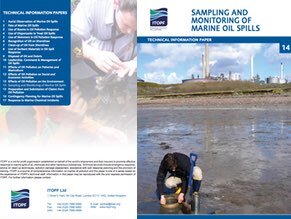TIP 14: Sampling and monitoring of marine oil spills
19 May 2014

Following a spill of oil, governments and other organisations often wish to know the extent of contamination of key resources or the impact of the incident on the marine environment. This information is important to determine if prompt action may be required to protect human health or sensitive resources. To facilitate decision-making, monitoring programmes may be undertaken, which will often involve surveys and the collection of samples of oil, water, sediment or biota for chemical analysis.
This paper provides a broad overview of the monitoring and sampling procedures that can be used for qualitative and quantitative monitoring of oil contamination. While qualitative analyses can confirm the source of oil contamination, monitoring programmes are often concerned with the quantitative changes in hydrocarbon levels over time. Guidance on analytical best practice is given and common terminology is explained. However, the techniques and observations required to monitor specific ecological or biological effects and to monitor contaminants in the air are beyond the scope of this paper.
Categories: Environmental effects, Planning & operations, Technical Information Paper (TIPS)
